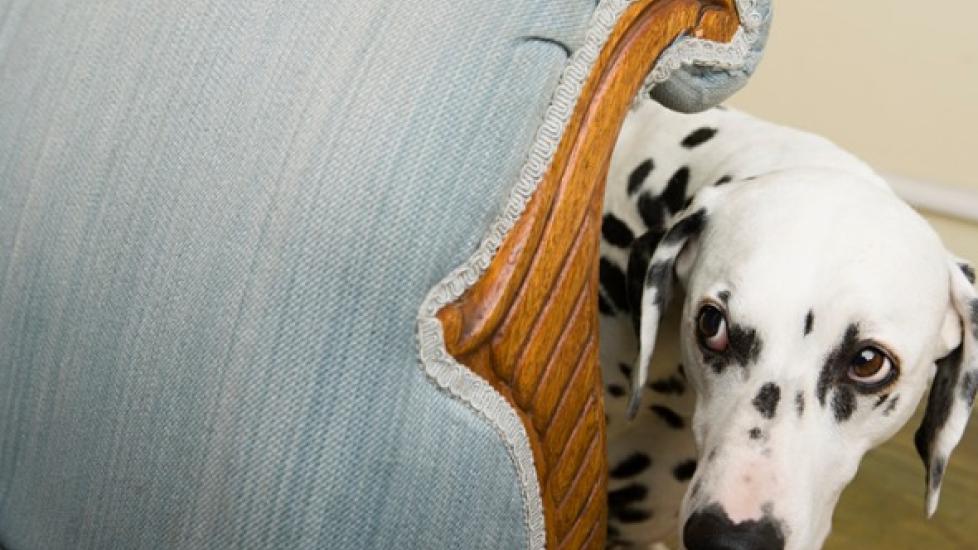You’re Not a Bad Pet Parent If Your Dog Doesn’t Like Kids
Dogs and children are the stuff of greeting cards, but not if you’ve got a dog that’s not a fan of the pint-sized crowd. It can be embarrassing if your dog is reactive around children, and depending on the intensity of the display, it can be downright dangerous.
Colleen Pelar, author of “Living With Kids and Dogs … Without Losing your Mind,” points out that a dog that’s “fine” with kids is not the same as a dog that’s “good” with kids. Merely tolerating interactions with children can easily tip over into reactivity if a dog is pushed beyond his comfort zone.
Being a pet parent to a dog that doesn’t like kids means that you need to be alert and aware to keep all parties safe until you’re able to pursue training to change your dog’s perception of them.
Reasons Why Your Dog Might Not Like Kids
Does your dog prefer to avoid the junior crowd? There’s a chance it’s because of:
-
A lack of socialization: If your dog didn’t experience enjoyable interactions with children during the puppy socialization period, they might seem scary or overwhelming to him. Socialization is an important dog training step that exposes pups to new sights, sounds and experiences at a gentle pace to help them gain confidence and reduce fearfulness.
-
A traumatic incident: Maybe your dog endured a series of unpleasant dress-up sessions with a small visitor, and now he equates people under 3 feet tall with feeling uncomfortable. Activities that look innocent to us, like allowing a child to climb on a dog or repeatedly take his bone away, can be incredibly stressful for dogs and might cause your dog to develop a negative association with children.
-
Unpredictable behavior: Children yell, run, jostle, tug, hug and tease, and that type of behavior can be overstimulating for some dogs. Pelar points out that nobody likes everyone. “There will be some people your dog doesn’t click with; that’s just life,” she says. “We’re most afraid of things we find unpredictable, and kids can top that list.”
What Does Kid-Prompted Stress Look Like?
Canine discomfort isn’t always signaled with barks and snarls. (Although, if your dog has those types of reactions around people, young or old, contact a qualified trainer or veterinary behaviorist).
A dog’s initial stress and fear reactions can be too subtle to notice, unless you’re actively looking for them, which is why people will often say a dog “snapped without warning.”
The signals are usually there, but pet parents need to be able pick up on them in order to be their dog’s translator and advocate.
A dog that’s uncomfortable with children and opts for an avoidance strategy might walk away when approached or attempt to hide when kids get too close. Unfortunately, children usually don’t recognize when a dog doesn’t want to meet them, and they try to pursue him anyway.
A dog that’s concerned about the proximity of kids might keep his tail tucked and have his ears plastered against his head. He might shake off as if he’s wet, lick his lips or mouth area repeatedly—as if tasting the air—yawn frequently, or even growl quietly.
Dogs that use preemptive strategies to keep their distance from children, like barking or loud growling, leave no doubt about how they feel. However, these demonstrative dogs have likely cycled through the subtler “please stay away” behaviors and have amped up their displays to try to maintain their distance.
What Not to Do When Your Dog Shows Discomfort
Like most canine behavior challenges, ignoring your dog’s discomfort with kids won’t make it go away. It’s a risky proposition anytime you’re dealing with reactivity, but especially so when dealing with children. Unfortunately, your dog won’t “grow out” of his discomfort around kids. Untreated, there’s a chance it might get worse.
Similarly, trying to make your dog “face his fears” can backfire. Pelar warns against putting your dog in a situation where he can’t get away when he’s worried, like holding your dog so that a child can pet him. Forcing your dog to cope with children at close range won’t help him to enjoy them. It might actually cause him to escalate his warnings if he feels that he has no other option.
First Steps If Your Dog Doesn’t Like Kids
If you notice that your dog is signaling that he’s uncomfortable in an encounter involving children, the safest bet is to manage the situation and remove him. Prevent children from running up to your dog to say hello, and always maintain a safety buffer when around kids in public.
You can begin to change your dog’s perception of kids with basic training that makes a connection between them and something your dog loves, like dog treats. Any time your dog spots a child in the distance, give him high-value dog treats for as long as the child is visible.
Once the child is gone, stop giving the goodies. In time, your dog will see children and immediately look to you to collect the treat, which means that he’s started to associate something that usually makes him uncomfortable (kids) with something wonderful (treats).
Dogs and Children: Safety First
Helping your dog feel more comfortable around children is a big job. If you’re concerned about the intensity of your dog’s reactions, the safest route is working with a positive-reinforcement dog trainer who can create a step-by-step training protocol that will help your dog learn to see the fun in little ones.
Image via iStock.com/Image Source
